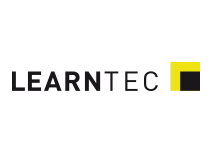Adapt Training Courses to the Trainees' Knowledge Requirements
Service Chatbot
Karlsruhe/Vienna, April 2025 - Dr. Harald Stadlbauer, General Manager of the NINEFEB Group, and Helmut Nagy, VP Sales Enablement at Graphwise, will present an intelligent service chatbot based on microtraining content, knowledge graphs with competence models and generative AI on Tuesday, May 6 at 11:30 am. Harald Stadlbauer developed the iNEED model for value-based granular content development and the associated iLEARN model for the controlled didactic development of modules.

Being well-established as a service provider for technical documentation and eLearning, you can draw on a rich pool of knowledge. To what extent is NINEFEB's intelligent service chatbot based on this foundation?
Dr. Harald Stadlbauer: We believe that the future of documentation and eLearning depends on intelligently linking content with the objective of making better use of it in the context of generative AI solutions. Knowledge graphs and knowledge models that link content with product knowledge, domain knowledge, competence models and other relevant standards are a key element in enabling these links. Another important factor is the modularization of content for better reuse and preparation for more efficient use in the context of genAI. All this serves to achieve better and more transparent results. Graphwise Platform is part of the foundation on which these intelligent service chatbots can be built.
You use, among other things, microtraining content and knowledge graphs with competency models. Why do you use these elements in particular?
Dr. Harald Stadlbauer: It is becoming increasingly important to offer training in the context of actual activities. Larger education and training programs are of course still relevant, but in the context of the existing shortage of skilled workers, which will intensify in the coming years, it will be necessary for agile learning to be available in the context of the activity.
To enable an increase in productivity that counteracts the labor shortage, it will be necessary to provide employees with learning content quickly so that they can take on activities that may not be part of their current expertise. This requires the maximum possible granularity of the learning content = macrotraining content and a good link between this and the work context = knowledge graphs in the context of the competencies of the respective employee = competency models.
In which areas does your service chatbot make the most sense? Which experiences have you already gained with it?
Dr. Harald Stadlbauer: For me, the service chatbot is just one possible application that can be created based on intelligent content (microcontent + knowledge graphs and knowledge models + GenAI). It's just the most popular application right now and if you look around, everyone seems to be working on chatbots, and you don't see many other application examples. This is also obvious; I think such discursive elements can be used very universally.
In the context of eLearning, it could take a direction in which the training courses adapt to the knowledge requirements and interests of the trainees without losing sight of the objectives to be achieved. It would be a nice idea if the trainees could enter a dialog with the eLearning system and always get the next best steps suggested based on the current needs, their level of knowledge and the learning objectives to be achieved.
Your company is a member of the iiRDS consortium. What does this mean for your further development of the use of AI in the future? Has it influenced the direction of your development to date?
Helmut Nagy: Unlike NINEFEB, we are not a member of the IIRDS consortium, but we are watching developments with great interest. Standards are an essential element for the effective creation of knowledge models and knowledge graphs. Especially in content delivery, there is still no overall standard that defines the connection between content, product, skills, events etc.
iiRDS tries to remain as simple as possible to allow room for individualization for specific use cases. Now that iiRDS is also part of the Asset Administration Shell, there is a good chance that it will become the standard. Given that it is important to prepare content for use in AI scenarios, standards such as iiRDS will be essential in the future.


